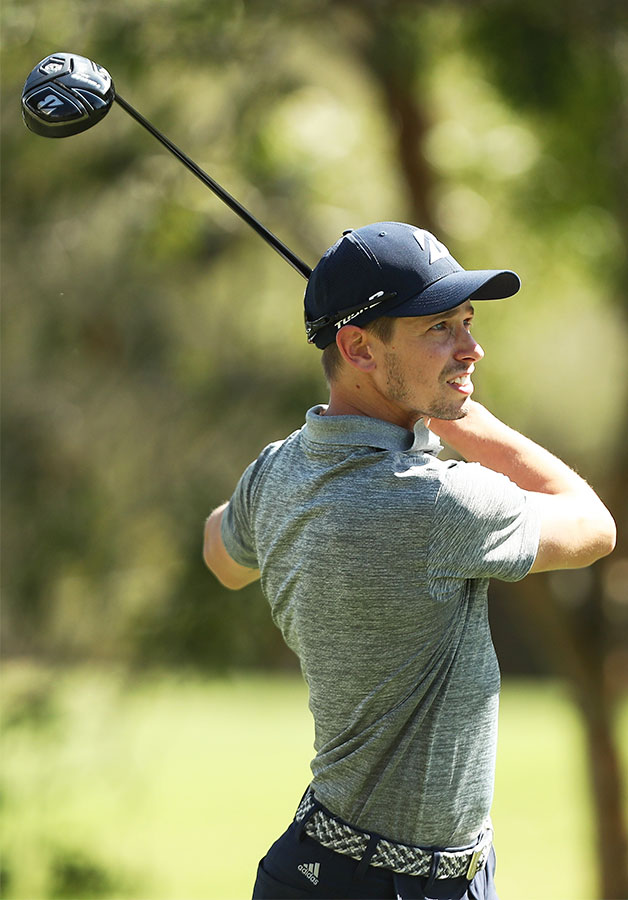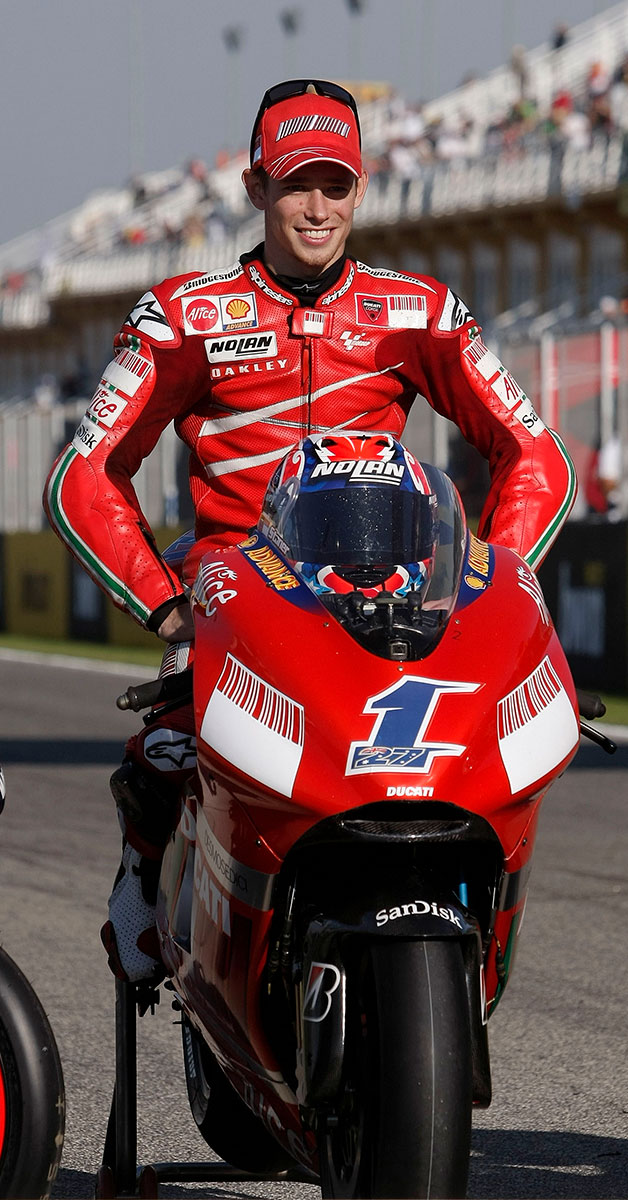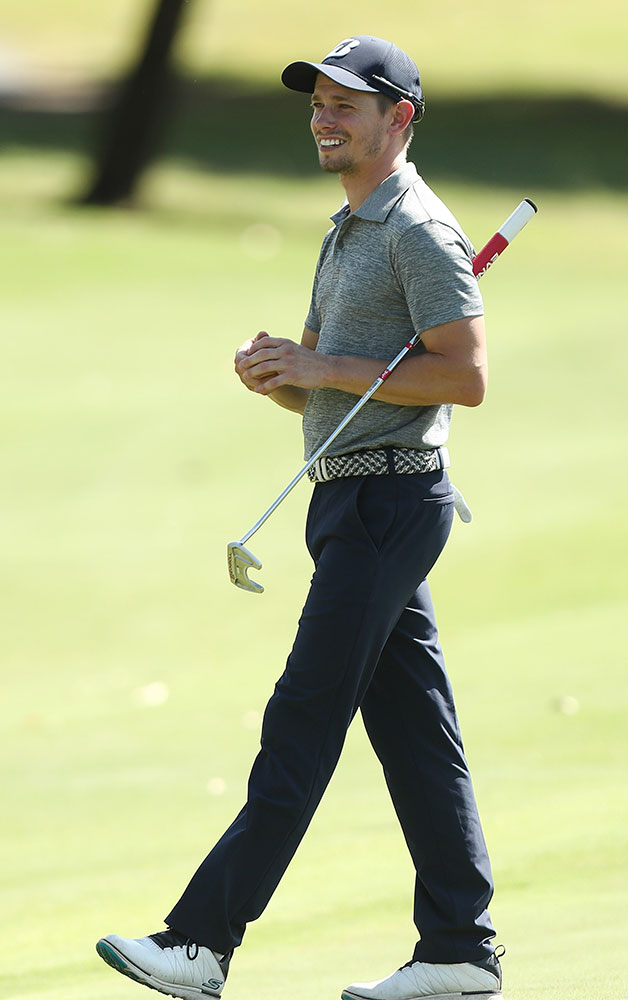Two-time MotoGP world champion Casey Stoner on how his battered body handles the golf swing, his dream to play the Pebble Beach Pro-Am and why Arundel Hills is the toughest golf course on the planet.
Standing alongside Casey Stoner, you can’t help but wonder how this slightly built kid from the Gold Coast – who says he can’t put on weight no matter how much Coca-Cola he drinks – could wrestle with a 157-kilogram heaving monster of modern machinery better than anyone else.
For six straight years from 2007 he was the Australian MotoGP champion, a feat that was honoured by the third corner at Phillip Island Grand Prix Circuit being named ‘Stoner Corner’ in 2012, and which will be in action again this month for the Australian Motorcycle Grand Prix.
MotoGP world champion in 2007 and 2011, Stoner retired at the end of 2012 at the age of just 27 and only 12 months removed from his second world crown.
Described by highly regarded sports doctor Dr Neil Halpin as being “as tough as anybody I have ever met”, Stoner fought back from a horrific ankle injury in 2012 to win at Phillip Island for a sixth time prior to retiring, his body subjected to more punishment in a dramatic crash at the Suzuka eight-hour race in 2015.
In December 2016 his golf curiosity developed into an obsession but as he told Australian Golf Digest, managing his body is more problematic than managing his game.
 The hands are a very important part of the golf swing; how did yours come through a decade of racing motorbikes at the highest level?
The hands are a very important part of the golf swing; how did yours come through a decade of racing motorbikes at the highest level?
Knowing when to let go is key. There’s a point where you can’t really save it and there’s a few that try to really hold on until the last moment. They’re the ones that normally end up with missing and broken fingers. When your knuckles are on the ground there’s no point trying to keep it there to pick it back up. If your knuckles are on the ground, it means your wheels are in the air and you’re done. I’ve always let go at the right time and fortunately kept my hands intact. The rest of my body has taken a beating, though.
After all that racing, what part of the body is put under the most pressure playing golf?
The knees aren’t great, the ankles aren’t great but the back and neck are definitely the worst. I’ve got leaking discs and things like that. I’ve got a really good physio, Jeremy Cross, who Adam Scott uses quite a bit as well. He’s been able to stop my back from spasming half as much as it used to. I’ve gone two or three years without having a big spasm when it used to happen maybe every couple of months. When that happens you’re stuck in bed for a couple of weeks waiting for it to repair.
“The knees aren’t great, the ankles aren’t great but the back and neck are definitely the worst.”
Casey Stoner
How often are you out on the golf course then?
I try to play twice a week if I’m feeling good. I’ve been struggling a little bit with my health lately but I’d love to play five times a week if I could. I’ve been struggling with some fatigue, so if I do two days in a row it hurts me.
Where do you play most often?
I’m a member at The Grand these days and Arundel Hills is where I started and got my first handicap a couple of years ago. My manager, Chris, was the one who got me into golf in the first place. We used to play maybe half a dozen games a year back in the day. In December 2016 I got my first handicap but since then I’ve taken two seven-month blocks off so that puts me back, especially my short game. That hasn’t been good for it.
 Did you get to play much while you were racing motorbikes around the world?
Did you get to play much while you were racing motorbikes around the world?
No, we didn’t get to play much at all. We used to play in Malaysia a bit because it was nice and cheap and the golf courses are amazing over there. Our favourite would have been Ernie Els’ course at Langkawi; I loved it. I’d like to go back there now that I’m playing golf a bit different, see what I thought of it. But it was just beautiful. I loved it. I loved how fast the greens were. I’d never played on any course with greens that fast. We played it two days in a row, and that was before we could play. I’d love to play it again now.
Arundel was where my friends were and where we started and I find that the toughest course in the world. It just punishes you, and I love that aspect of it. Learning to play golf there, you’ve got to be so patient and so meticulous with everything. It’s hard work and that’s what I like about it.
Have you set yourself any golf goals to achieve?
I’m off 11.5 now, so a single-figure handicap for sure. I felt like I should have been there a while ago but I had to go in for shoulder surgery at the beginning of last year and that put me way back. Even now I should be there, I’ve just been way too inconsistent with a couple of my clubs and my back collapsing a bit. I’d like to get to single figures and then maybe play a few of the bigger pro-ams overseas.
Have you got your eye on any pro-ams in particular?
The Dunhill in Scotland is one, that’s been on the books, and the AT&T at Pebble Beach as well. I’ve got an invite to Dunhill, that won’t be a problem, but I don’t want to turn up as a hack. I’d like to at least have half a golf game and be able to turn up and not embarrass myself.
 What are you like when it comes to equipment? Are you a tinkerer? Were you that way with the bike?
What are you like when it comes to equipment? Are you a tinkerer? Were you that way with the bike?
I tinker more with my body with golf. I’m with Bridgestone because we’ve had great success together and they supply me with clubs, which is great. I’m absolutely in love with their stuff, especially their drivers. My 3-wood and 5-wood are Japan-issue – they don’t bring them into Australia or America,
I don’t think – but they got them for me from Japan and they’re just incredible.
I tinkered a little bit with shafts just at the beginning. Because I’m short and small and skinny people were recommending that I was regular flex and I was really struggling with my contact. Somebody checked my swing speed and told me my shafts were way too soft, so stiffening up the shafts and getting that aspect right has really helped my golf.
Realistically it’s more tinkering with me. That’s the biggest factor, you, and there’s still a lot to go.
Do you adopt an analytical approach to the game or more visual and artistic?
I do keep an eye on my stats. I want to be held accountable for my misses. I want to know if there’s a serious problem so I can go to the range and work on that.
It was the same when I was racing. I was very good at trying to make the bike as good as we could with what we had, but at the end of the day it’s up to you.
If you’ve got a weakness you may as well get rid of that because it’s a lot easier to do that than fixing a bike. It’s the same thing with golf. Rather than fix clubs and things like that, it ends up being me.
Trying to fix me is the hard thing. My body doesn’t comply at times. But I love the game of golf for that reason… and hate it at the same time.
Casey Stoner spoke with Tony Webeck




